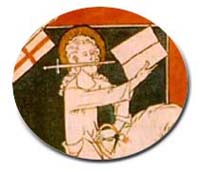No Unity Is Possible unless Heretics Return to the Catholic Church
Continuing to present the traditional teaching of the Popes who have condemned the present day Ecumenism (here, here and here), today we bring to the attention of our readers a rich text of Leo XIII from his Encyclical Satis cognitum. In it, he bombards the foundation for the Conciliar Popes' intent to make a union of religions outside the Catholic Church.
Pope Leo XIII
Dispersed and separated members cannot be united with one and the same head to form one single body. St. Paul tells us, ‘All the members of the body, whereas they are many, yet are one body; so also is Christ’ (1 Cor 12:12). Wherefore this body, he further states, is united and joined together. ‘Christ is the head, from whom the whole body, being compacted and fitly joined together, by what every joint supplieth, according to the operation in the measure of every part’ (Eph 4:15,16).
And so, therefore, if some member becomes separated and detached from the other members, it cannot belong to the same head to which the rest of the body belongs. St. Cyprian says: ‘There is only one God, only one Christ, only one Church of Christ, only one Faith, only one people, joined together in the solid unity of a single body by the bond of concord. This unity cannot be broken: a body that remains whole cannot be divided by the separation of its constituent parts.’ (St. Cyprian, De Catholicae Ecclesiae unitate, n. 23).
To establish more clearly the unity of the Church, God presents it to us under the image of a living body, whose members cannot live unless united to the head and draw incessantly from it their vital force. Separated from the head, they must die. ‘The Church cannot be divided into parts by the separation and cutting asunder of her members. Everything that is separated from her center of life cannot live or breathe apart from her’ (ibid) ....
One seeks, therefore, another head similar to Christ, one seeks another Christ, if one wants to imagine another Church outside of that which is His body. ‘See what you must beware of; see what you must avoid; see what you must dread. At times it happens that some member may be cut off from the human body, that is, be separated from the body: a hand, a finger, a foot. Does the soul follow the amputated member? So long as it was on the body, it lived; separated, it lost its life. Thus the man, so long as he lives on the body of the Church, he is a Christian Catholic; separated from her, he becomes a heretic. The life of the soul does not follow the amputated member’ (St. Augustine, Sermo 267, n. 4.),
The Church of Christ, therefore, is one and the same forever. Whoever leaves her departs from the will and command of Our Lord Jesus Christ; leaving the path of salvation, he enters that of perdition. ‘Whosoever is separated from the Church is united to an adulteress. He has cut himself off from the promises of the Church. Whosoever leaves the Church of Christ cannot arrive at the rewards of Christ. ... Whosoever observes not this unity observes not the law of God; whosoever holds not the faith of the Father and the Son, holds not to life and salvation.’ (St. Cyprian, De Catholicae Ecclesiae unitate)

(Leo XIII, Encyclical Satis cognitum, of June 29, 1896 (Petrópolis: Vozes, 1960), n. 10)
Posted on April 21, 2012


Related Topics of Interest
 Pius XI Refutes Vatican II’s 'Sinning Church' Pius XI Refutes Vatican II’s 'Sinning Church'
 Pius XI Refutes John Paul II’s Ut Unum Sint Pius XI Refutes John Paul II’s Ut Unum Sint
 One Who Enters into Ecumenism Abandons True Religion One Who Enters into Ecumenism Abandons True Religion
 Ecumenism Is Synonymous with Religious Indifferentism Ecumenism Is Synonymous with Religious Indifferentism
 Catholics Should Not Collaborate with Non-Catholics Catholics Should Not Collaborate with Non-Catholics
 Neither Charity nor ‘Martyrdom’ Can Save Non-Catholics Neither Charity nor ‘Martyrdom’ Can Save Non-Catholics
 How to Address Protestants & Schismatics How to Address Protestants & Schismatics
 Religious Liberty, a 'Monstrous Right' Religious Liberty, a 'Monstrous Right'
 The Church’s Rigor against Heresies The Church’s Rigor against Heresies
 How to Address Heretics How to Address Heretics

Related Works of Interest
|
|